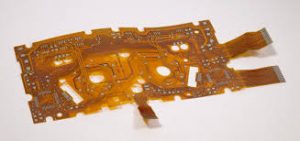What role do flex PCBs play in flexible printed touch sensors?
What role do flex PCBs play
When it comes to designing flex circuits it is important to remember that the layers aren’t all the same. Different regions in a flex circuit will require different layer stacks, and the number of layers can impact the cost of the board. For example, areas with plated through holes will typically have to be higher-than-normal-layer stacks to allow for the necessary soldering tolerances. This can significantly increase the overall cost of the design. For this reason, it is essential to consult with PCB and layout experts early in the design process to discuss what stack-up works best for your specific project and to determine if there will be additional costs associated with a different stack-up.
Another important consideration when choosing a flex pcb is the choice of base material. The copper-clad laminate (CCL) is the primary component of a flex circuit, and professional designers usually choose a polyimide CCL due to its excellent thermal control properties. This allows the CCL to withstand extremely high temperatures without softening and losing its flexibility. It is also tolerant of repeated solder reflow cycles and is very stable in expansion and contraction with temperature changes.
Other factors that will affect the performance of a flex circuit are the choice of copper, the thickness of the copper foil and how it is deposited. Generally, thinner copper is better for a flex circuit as it can be stretched more before fatigue cracking occurs and is springier in the Z direction. It is also recommended that the copper be rolled instead of etched when possible as the rolling process elongates the grain structure of the copper.

What role do flex PCBs play in flexible printed touch sensors?
A flex circuit’s impedance is also critical to the correct operation of its signal traces. Matching impedance between the CCL and the conductive copper is essential to maintain signal integrity. Impedance can also be affected by the choice of insulation materials, the width of the conductive traces and the distance between them.
The ability to bend and conform to unique product shapes is one of the major reasons flex circuits are so popular in IoT applications. From wearable IoT devices like fitness trackers to smart jewelry, flex PCBs can seamlessly connect components and provide power to devices with complex form factors.
If you want to leverage the full benefits of a flex PCB in your next IoT application, try the complete set of PCB design tools and automated drawing capabilities in Altium Designer on Altium 365. Get started for free today.